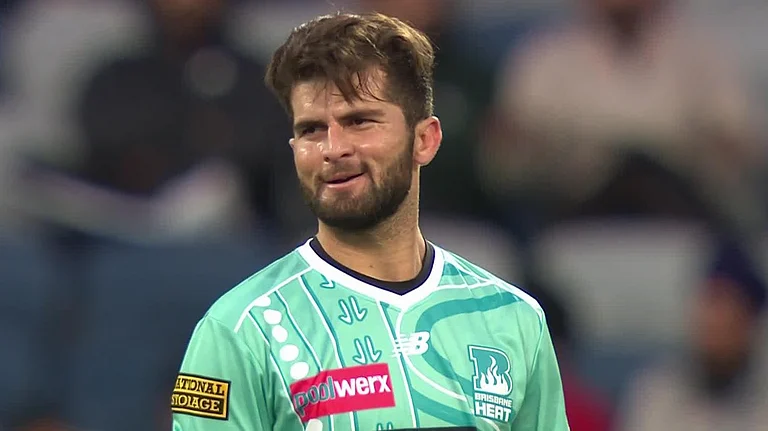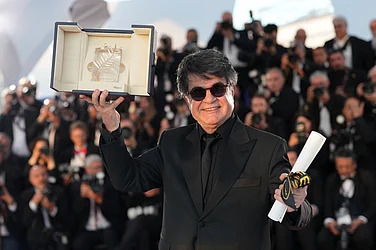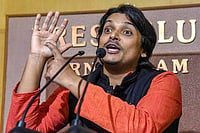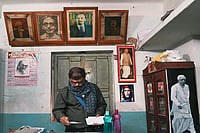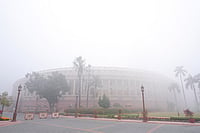GETTING approval in India for projects where foreigners are involved is never easy. But when the time came to get permission from the Kerala government to shoot Merchant-Ivory's latest film Cotton Mary in and around Fort Kochi, producer Nayeem Hafizka had his reasons down pat. I told the authorities that this was going to be a movie about them and for them this is their movie, in fact, he says, waving his fork expansively at a restaurant table overlooking the calm sun-washed Kochi waters.
It worked. Convinced they were helping to bring out a truly international film about their home state, the people of Kochi lent their furniture and even their homes for a pittance. Out came the tables and chairs from the Bolghatty Palace, while a government officer's home was converted for the duration of the shoot into the production office. And with the police taking special care to see there were no untoward incidents, both cast and crew were soon safely ensconced in idyllic surroundings.
Too idyllic, perhaps. For, as the days passed, a rift developed between the European and local actors. The locals feel they have been shortchanged with some of their lines being cut, says Alexandra Viets, the author of the original screenplay. The trouble, perhaps, lay in an inherent ambivalence in the plotline. Set in the Kochi of the '50s, the story describes the lavish lifestyle of straggler English families, seen through the covetous eyes of Cotton Mary, an ayah (played by Madhur Jaffrey). A local Anglo-Indian, she thrills at the propsect of becoming part of those she serves a typical wannabe, who naively believes English cotton is the best, without knowing it actually comes from India.
The question is, would it really be their story, as promised? According to Viets, the film has shifted from having an Indian perspective to now representing a slightly more European view. One of the lead actors was even heard wondering aloud whether Cotton Mary might end up merely appearing as a disruption in the British family she works for rather than the other way around.
There's also a battle for screen time, for close-ups and a battle for whether it is going to be something original where you do see the ayahs and the maalis and the other people behind British life in India. Complains Beena Manoj, a local theatre actress who plays a nurse, We're very disappointed. At the audition, we were told we had quite a few lines, but a lot was cut out. In the end, Beena says that they had only two or three sentences after all of six days of work.
Second assistant director Simon Kurian, a local, admits lines have been cut. But, he insists, its the first time an international film about Kerala is being made and some of the cuts are purely for scheduling purposes. Kurian also says many locals were recruited to help with the production. This is not usual. When an international filmmaker comes to India, it is very rare that so many locals are roped in, and it is very good for us, he says.
A gregarious producer-turned-director, Ismail Merchant tries to brush away suggestions of acrimony. Says he, Kochi is very special. People have grace, they have a self-respect which I don't find in the north.' An old India hand, hes probably used to all this. Cotton Mary is the ninth India venture for Merchant-Ivory Productions (MIP) the affair began nearly four decades ago, with The Householder.
Merchant makes it clear that MIP is giving something back. Stopping his jeep at the Cochin Club, one of the locations used, he waves a hand at the bougainvillae on the grounds. We planted 100 trees here although the club people resisted at first. But look at the way the plants are flourishing now, he says proudly.
Left unsaid is the fact that bougainvillae don't cost much and MIP films are generally made on a shoe-string budget. This one has cost $2 million so far; the average Hollywood film costs around $90 million. And that could be a cause for some of the tension on the sets. Comments Kurian: Ismail is a very demanding guy. He makes maximum use of his crew, who are usually overworked, and some of the scenes are very disorganised. He adds candidly, I'm not used to this. Merchant isn't impressed. People here are not used to the fact that we have to stick to a schedule as we have to stay within budget, he says.
The rifts also expose a clash of cultures and work philosophies. James Wilby, who plays the main white male character in Cotton Mary, is openly critical. It's total chaos on the set. Perhaps its because its a low-budget film or because Ismail has taken people at the beginnings of their career, there is a certain haphazard quality to it. Perhaps this is just India.
There are also occasional complaints about the lack of decent lodgings for the less privileged among the crew. But though they appear always on the verge of rebellion, it never happens. Merchant ensures this by a judicious mix of bullying and charm. He routinely invites cast, crew and media representatives over to his home for a meal which he usually cooks. And how can one possibly bite the hand that, literally, feeds?
Meanwhile, the production unit tries to help by poking fun at the obvious lack of funds. Come on, guys, you can only break one egg in this scene, this is a low-budget movie, Pierre Lhomme, the director of photography, can be heard yelling during a kitchen scene.
The sniping on the Cotton Mary sets is not limited to the cast members. Some feel that the departure of James Ivory who did much of the direction in the first six weeks has left a void. Ivory can change a whole scene by changing just one movement or word. He's amazing, says a crew member. She says she now feels a bit lost.
In Ivory's absence, directorial inputs seem to be flying in from everywhere. Confesses Merchant, the designated director, I don't believe that this is solely my territory. On the other hand, there are those who are listed as co-directors who are doing very little directing by their own admission. Says co-director and main actress Madhur Jaffrey, I do a bit here and there, mostly about my own part, but on the whole I have not done much. Actress Greta Scachi describes Merchant's direction as being very much of the James Ivory school'. But Merchant can never be found doing just one thing at a time. While directing, hes also shouting for the tea man, offering samosas, sending faxes about future and past projects, and making sure that one of the unit who has a boil on her knee gets taken to the doctor.
Spread so thin, direction is perhaps bound to suffer. And in this production, the actors have a big say in how their roles should be played. Says Wilby, My character was written too harshly. The skill for me here is to make him more believable. Thats been the toughest part. Viets agrees that he has added several levels to the original role.
Informality has been the hallmark of mip on as well as off the set. Prior to the actual production, when Viets was going into labour with her first baby, Merchant and Jaffrey happened to call her at home to invite her to dinner. When Viets told them that she was about to deliver a baby, they responded: Why don't you come and contract here then, and we can talk as well? Viets says she still remembers lying on the delivery table and thinking that it was far easier to have a baby than to make a film.
But as the film labours on to a final delivery, about all that the unit is obsessed about is the need for sleep and more mosquito repellent. Not very demanding at all.










